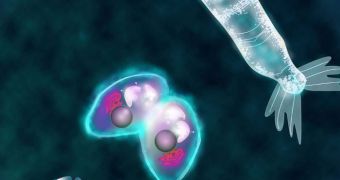A team of experts at the Massachusetts Institute of Technology (MIT) announces the development of a new model that can simulate the way unicellular bacteria and multicellular microbes distribute energy throughout their bodies.
The balance between energy production and expenditure inside any living organism is called metabolism, and its efficiency largely dictates whether that organism will be efficient from an evolutionary standpoint.
Each individual organism needs to be on alert when it comes to distributing its resources. Some processes are critical – such as breathing in humans – while others can be ignored for a while without many negative consequences.
Over time, the pattern in which resources are allotted inside the lifeform varies, so that the demands the environment makes at that particular time be successfully met. This type of adaptation boosts the chances each individual has of surviving.
Studying the evolution and shift of metabolic patterns constitutes the science of bioenergetics. In the new study, the MIT team managed to develop a tool that models energy expenditure in bacteria and microbes. This is one of the few such tools ever created.
In order to make things easier to understand, the team categorized all functions an organism needs to complete in two large categories. The first contains processes related to growth and reproduction, while the second one contains all processes that help with maintenance and repair.
Details of the research effort were published in the December 26, 2011, issue of the esteemed journal Proceedings of the National Academy of Sciences (PNAS). One of its main applications could be that it will allow investigators to understand hard-to-decipher processes, such as major evolutionary shifts.
“You can imagine a life strategy for one organism might be, 'I’m not going to spend anything on maintenance, I’m just going to reproduce as quickly as possible and hope I make so many copies that some of them will get through',” says Mick Follows, a coauthor of the PNAS paper.
“And the opposite strategy is, ‘Well, I’m going to invest less in reproduction, and really take care of myself and keep myself in prime condition and not die if I can help it',” adds the expert, who is a senior research scientist with the MIT Department of Earth, Atmospheric and Planetary Sciences.

 14 DAY TRIAL //
14 DAY TRIAL //